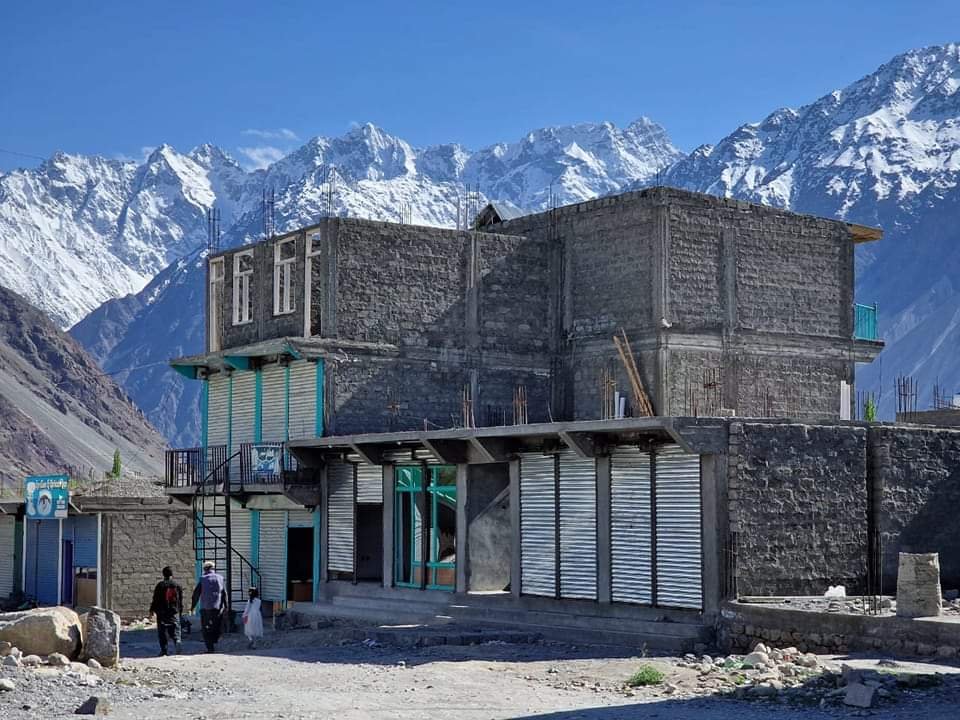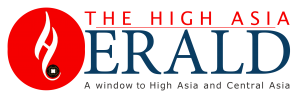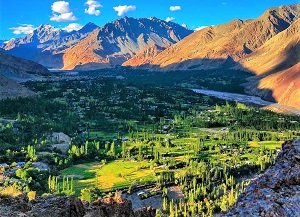A captioned note from one of the panel discussions held under the Pakistan Institute of Development Economics (PIDE) at Karakorum International University (KIU) Gilgit captured my attention. The note labeled the Real Estate sector as a game changer and a factor for economic growth in the area. However, later, one of the panelists clarified that it had not been discussed and was, in fact, a misreporting. He added that the discussion had instead focused on land management in the region.
Similar views generally prevail, especially among the corporate sector, who see an opportunity in converting land into massive buildings and using them for various business purposes such as hotels, restaurants, shops, malls, and other ventures of the kind.

Photo credit: Karim Shah Nizari 
Photo credit: Jahangir Karamat
Let’s be clear here: promoting real estate business in mountain regions should be discouraged as it may result in disfiguring mountain landscapes, creating ecological and civic problems, as well as mass-scale displacement and migration of people towards urban centres. A real estate tycoon could transform a village into a concrete mass, by unplanned constructions like those in Murree, Kalam, Kaghan, and Naran.
Therefore, environment-friendly construction practices, coupled with effective regulations, are essential for fostering sustainable economic growth. Otherwise, the negative externalities would significantly impact both the livelihoods and natural beauty of the area. We have witnessed the result of such unplanned construction of concrete jungles and intrusion in nature in the wake of unprecedented floods that played havoc in Kalam, Swat, and other mountain regions.
Human capital
The first and foremost factor for economic growth in the region should be investment in human capital. In theory, human capital comprises knowledge, abilities, and well-being that individuals gather over time, empowering them to fulfill their potential as valuable contributors to society. By fostering human capital, severe poverty can be eradicated, and more inclusive communities can be fostered.
Achieving this entails making investments in individuals, including provisions for proper nutrition, healthcare, high-quality education, job opportunities, and skill development.
The World Bank, in one of its Human Capital Reviews (HCR), launched recently, mentioned that Pakistan’s human capital outcomes are more comparable to those in Sub-Saharan Africa because its neighbouring countries like Nepal and Bangladesh show better outcomes.
Social sector
The report emphasizes that the country should declare emergencies over its health and education crises, priorities family planning across all human development initiatives, invest more smartly in people, and develop avenues for them to deploy their human capital more productively. Also, improve child development and learning outcomes by integrating high-quality, contextually relevant parenting and behavioral change programmes into existing health, social protection, and education platforms, make nutrition a national priority by focusing on strengthening stakeholder momentum and coordination, and mobilize financing and track spending and progress while supporting the labour market and human capital outcomes of the poor through multipronged interventions, including those anchored on cash transfer programmes.
These recommendations also seem pertinent in Gilgit-Baltistan’s context as the issues are similar here. However, the not-for-profit sector has shown better outcomes in Hunza, Ghizer, Nagar, Gilgit, and Skardu districts. The public sector needs to play its due role as well. Though the chief secretary seems to have taken some new initiatives, however, these need to be more evidence-driven and contextually relevant.
Minerals’ potential
Secondly, the sustainable and careful use of natural resources can help enhance economic growth in the mountainous region where minerals including, but not limited to, gold, gemstones, and other metals like copper, are found in abundance. Leases for the exploration and extraction of minerals should not be issued without the informed prior consent of the local community and are subject to EIA. The current outdated and corrupt practices of issuing leases to non-local investors should be stopped forthwith as it has led to conflicts between communities and the miners.
If the industries department focuses on responsible mining practices in the region, it can generate revenue, ultimately leading to enhanced employment opportunities and stimulating economic growth and prosperity. In this regard, Karakoram International University and Baltistan University can help through research and development.
Tourism sector
Thirdly, sustainable, and eco-tourism and the regional trade between China and Central Asian countries can enhance growth potential only if the trade agreements clearly and responsibly focus on community development and pro-people policies.
The region’s breathtaking physical resources like mountains, glaciers, lakes, rivers, and tracks make it an ideal place for the international community to come and witness the natural beauty. If the infrastructure is improved and responsible tourism-related activities are promoted, the local economy can get boosted. Likewise, the strategic location of GB makes it an ideal place for trade with China and other Central Asian countries. It may help local handicrafts, fruits, and other exportable goods reach the international market.
Last, but not least, the economic empowerment of the region is of immense importance. The local political leadership needs to be empowered in law-making and exercising their rights. The laws and policies aimed at developing Gilgit Baltistan need to be drafted and approved in consultation with the local leadership and community.

Naveed Hussain is a researcher and economist based in Islamabad. He likes to play with quantitative and qualitative data along with having a profound interest in news and views from the social development sector. He contributes essays on social and political issues to various blogs in Urdu and English.

The High Asia Herald is a member of High Asia Media Group — a window to High Asia and Central Asia

